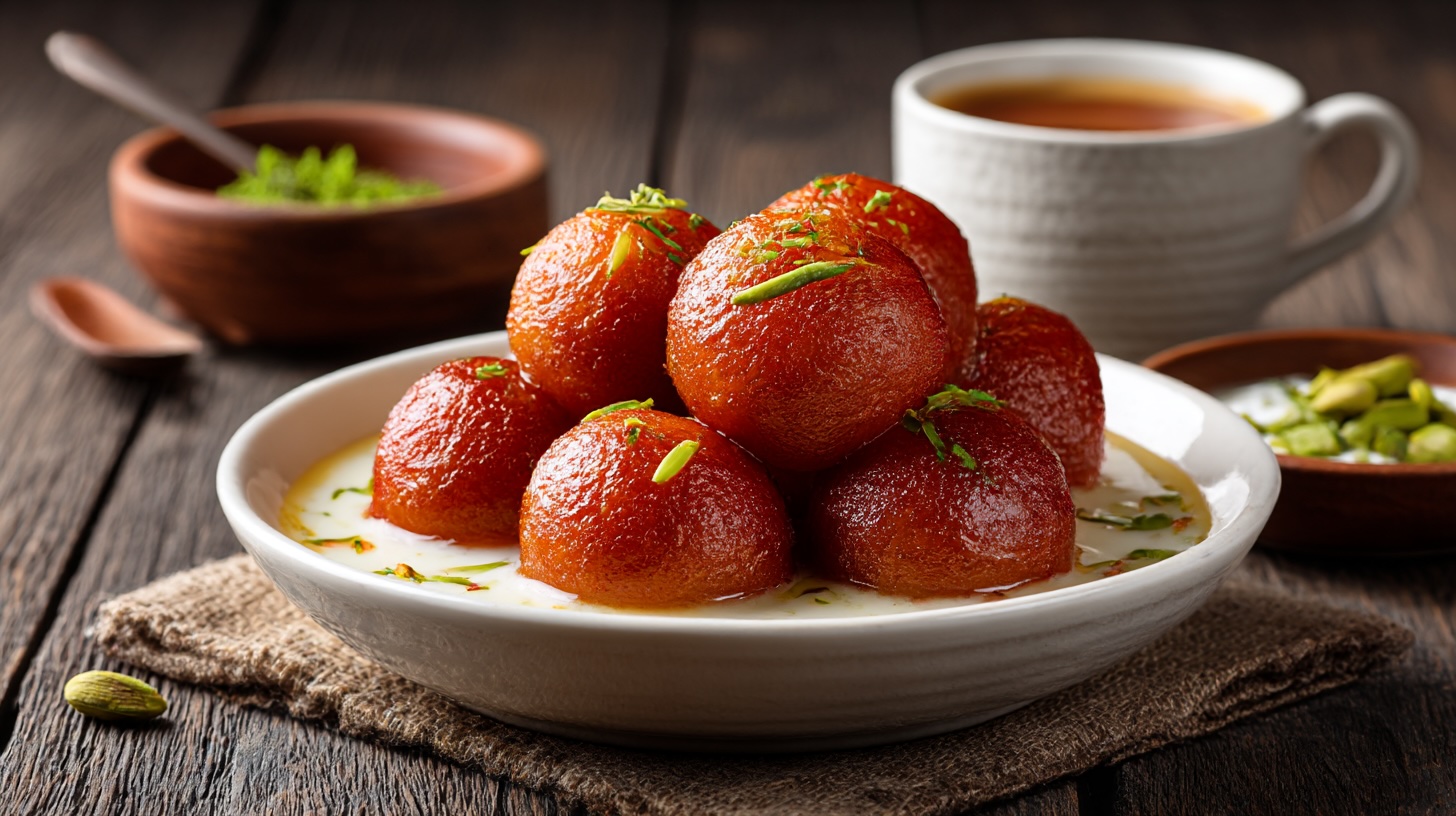Gulab Jamun: The Dessert That Dares to Drown in Syrup
There’s a moment at every Indian wedding, festival, or any mildly celebratory Tuesday when someone spots the shiny steel bowl of gulab jamuns and lets out an involuntary gasp. It’s not subtle. Neither is the dessert. These sticky, syrup-soaked dough balls are the diva of the Indian sweet scene. You don’t nibble a gulab jamun. You commit to it.
Let’s start in the Mughal kitchens, where sweet dreams were spun out of saffron, rosewater, and a disarming amount of ghee. Gulab jamun has roots in Persian and Turkish culinary traditions—’gulab’ from the Persian words for rose (gol) and water (ab), and ‘jamun’ from the Indian fruit that resembles the sweet’s dark hue. Early versions were reportedly inspired by Turkish fritters soaked in attar-scented syrup. The Mughals, never ones for understatement, turned it into something truly decadent.
The traditional version is made from khoya, milk solids painstakingly simmered down until they’re halfway between dairy and alchemy. Rolled into balls, deep-fried slowly to a deep brown, and then bathed in cardamom-laced sugar syrup, the result is like biting into a warm hug. Or a sugar grenade, depending on your perspective.
Regional varieties? Oh yes. In Bengal, you’ll find pantua—similar but often made with chhena (a fresh cheese). Down south, there’s dry jamun that’s rolled in sugar and has more chew. Some cheeky versions are stuffed with nuts or soaked in rum, because why not? And in Nepal, they often serve lal mohan, a near twin, equally ready to seduce your pancreas.
What makes gulab jamun special, though, isn’t just the taste. It’s the ceremonial nature of it. No one ever says, “Oh I just grabbed a quick gulab jamun.” You savour it. It’s shared. It’s gifted in little boxes with gold script. It survives long train journeys in sticky clingfilm. It shows up after funerals and at cricket victory parties. It’s sentimental. Sugary nostalgia in orb form.
Now, drinks. Chai, of course. A sweet masala chai cuts the richness beautifully. But if you’re getting experimental, try a glass of cold rosé. Seriously. Or a dark rum on ice, if you’re feeling defiant. Even a small glass of Tokaji Aszú if you’re turning dessert into an artform.
Other foods? Frankly, it pairs well with very little else because it dominates the stage. But if you must, a scoop of vanilla ice cream is a worthy partner. The cold and the hot, the creamy and the syrupy—it’s like Bollywood in your mouth. Also: rabri. Always rabri.
On the health front, well, let’s not kid ourselves. Gulab jamun is a cholesterol-packed sugar missile. But it’s not something you eat daily (unless you’re terribly lucky or a sweet shop inspector). One ball has around 150–200 calories, but emotionally, it’s weightless.
Where to find the good ones? Any self-respecting Indian sweet shop from Delhi to Durban. Haldiram’s and Bikanervala for mass-produced consistency, but if you’re in Old Delhi or Lucknow, look for corner sweet shops where they’re fried in ghee and syrup so thick it nearly crystallises. Or try London’s Southall or Leicester—UK gulab jamun is surprisingly solid.
And now, the part where you pretend you’ll make them at home, but end up with syrup on the ceiling.
Gulab Jamun Recipe (Khoya-based)
Ingredients:
- 1 cup khoya (mawa), grated
- 1/4 cup all-purpose flour
- 1/8 tsp baking soda
- 2 tbsp milk (or as needed)
- Ghee or oil for deep frying
For syrup:
- 1.5 cups sugar
- 1.5 cups water
- 4 green cardamom pods
- A few drops of rosewater (or kewra water)
- Optional: saffron strands
Method:
Make the syrup first. Combine sugar, water, cardamom, and saffron in a pan. Bring to a boil, then simmer for 5–7 minutes until slightly sticky. Add rosewater and keep warm.
Mix grated khoya, flour, and baking soda. Add milk slowly to make a soft dough. Don’t overwork it. Let it rest for 10 minutes. Roll into smooth small balls—no cracks or they’ll rebel in the oil.
Heat ghee/oil over medium-low heat. Fry balls slowly, stirring gently, until deep golden brown. Don’t rush—raw insides are a sin.
Drain briefly, then drop them into warm syrup. Let them soak at least an hour. They plump up, get glossy, and basically become royalty.
Serve warm, cold, or directly from the fridge at midnight while nobody’s watching.
Just don’t eat them all. Actually, do.




1 comment